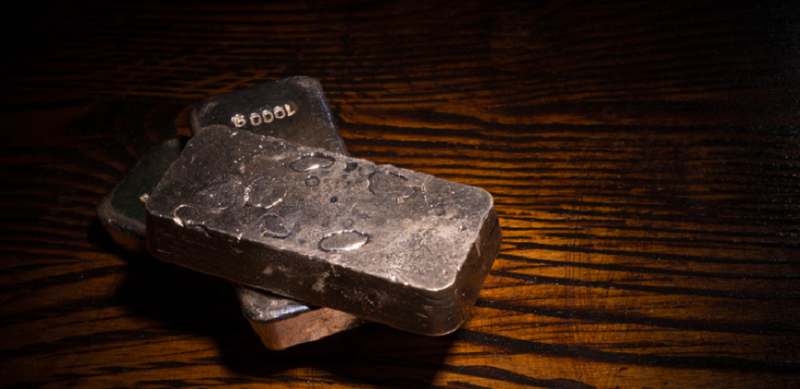The ocean sparkles with each passing wave, winking at explorers brave enough to explore its depths. Among the many underwater adventures, hunting for treasure among sunken ships is perhaps the most thrilling. It is the siren call of ships taking unfortunate detours, intact treasures and untold stories.
One shipwreck that was recovered richly was the SS Gairsoppa, a steam merchant ship of British origin.
A ship filled with gold bars and supplies
During World War II in 1941, this sea was the scene of a savage war between German U-boats and Allied ships. SS Gairsoppa left Calcutta in December 1940 to join the convoy to British docks, its cargo intended to refill the nation’s treasury. Filled with gold bullion, Gairsoppa weighed a total of nearly 7,000 tons and deteriorating weather and limited maneuverability depleted fuel supplies. Doubting the possibility of reaching Liverpool in that state, the Captain asked permission in the 2nd month of their voyage to dock at the nearest port, which happened to be on the west coast of Ireland.
Like a sheep lost from the flock, Gairsoppa separated from the convoy and was discovered by the German long-range aircraft Focke Wolf Condor. If the Condor was the eye in the sky, the U-boats were the Wolves of the sea, ready to spring into action and take down any remaining Allied ships. A ship heavily loaded and unescorted was easy prey, and Gairsoppa sank just 20 minutes after being torpedoed.
Deserted ship!
The crew was ordered to abandon ship, but unfortunately only two lifeboats successfully entered the water. Second Officer Richard Ayres was on board, whose quick response gave them respite from machine gun fire and the intense fire of the wreck. 31 men of Gairsoppa’s 85 strong crew were on his boat, but none knew how to sail. Ayres repaired the damaged rudder with an oar, sailed east, and distributed spare blankets and small rations to the shell-shocked survivors.
They had been at sea for thirteen days before they sighted land, the Lizard Lighthouse on the Cornish Coast appearing in the distance. Unfortunately, punishing waves caught their lifeboat as they approached a cove, drowning the crew as it capsized and Ayres himself was thrown onto the rocks.
He was almost exhausted from seeing the dead people when he heard the voices of three young girls calling him to “keep swimming.” Betty Driver and the Martin sisters were walking along the cliffs when they discovered the small vessel, they raced to call the Coast Guard for help and pulled Ayres to safety. One can only imagine what a harrowing experience this was for a man who put the lives of his crew above his own.
Even after his death, his respect for them was evident, as he ensured during his recovery that the Muslim sailors’ bodies would be buried according to their religious rites. The bodies of the four crewmen were given a proper burial at St. Wynwallows nearby. Richard Ayres was awarded an MBE in recognition of his services and the enormous efforts he made to keep his comrades alive.
A sinking ship rises
It is ironic that submarines brought down the once mighty Gairsoppa and that decades later, submarines also played a key role in its recovery. The team in charge of cargo recovery made every effort not only with the gold bars but also with the remaining cargo on the ship. Other finds from the ship include enough tea to sustain around 65% of the British population for an entire week. This was intended to help boost morale during the war, with the British weekly tea ration being 30 cups per adult.
Although a tragic story, the recovery of the SS Gairsoppa was a gift from the sea. Preserved letters, photographs and postcards brought closure to friends and families of the missing crew, and some remain on display in museums today. For those interested, an online exhibition titled Voices from the Deep provides a visual story of the salvaged ship, reflecting the wartime atmosphere and human resilience in the face of face adversity.
Treasure recovery
In 2011, an expedition searching for the lost ship found gold – or rather, silver – about 300 miles off the Irish coast. A year ago, the British government issued an order to salvage the silver bars the ship had been carrying since the 1940s. Odyssey Marine Exploration Inc. received the contract and after successfully finding the ship, they began the difficult task of documenting and recovering.
At this point, Gairsoppa sank 4,700 meters below the surface, about half a mile deeper than the Titanic. The recovery of the bullion took more than a year, unearthing more than 110 tons or 2,792 silver bars from the wreck. This amounts to almost 99% of the recorded silver it is transporting, or a whopping estimated value of 137 million euros. As fortuitous as this gift from the sea proved, Gairsoppa has even more hidden treasures in the form of preserved documents that help better understand such a tumultuous period in history.




